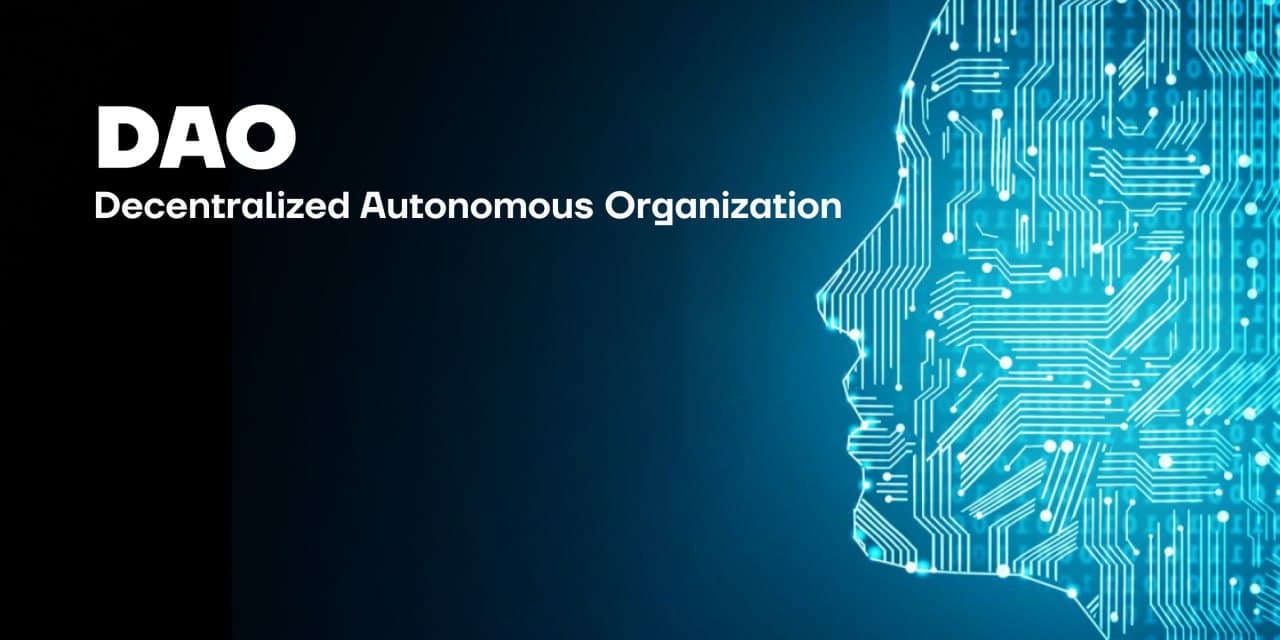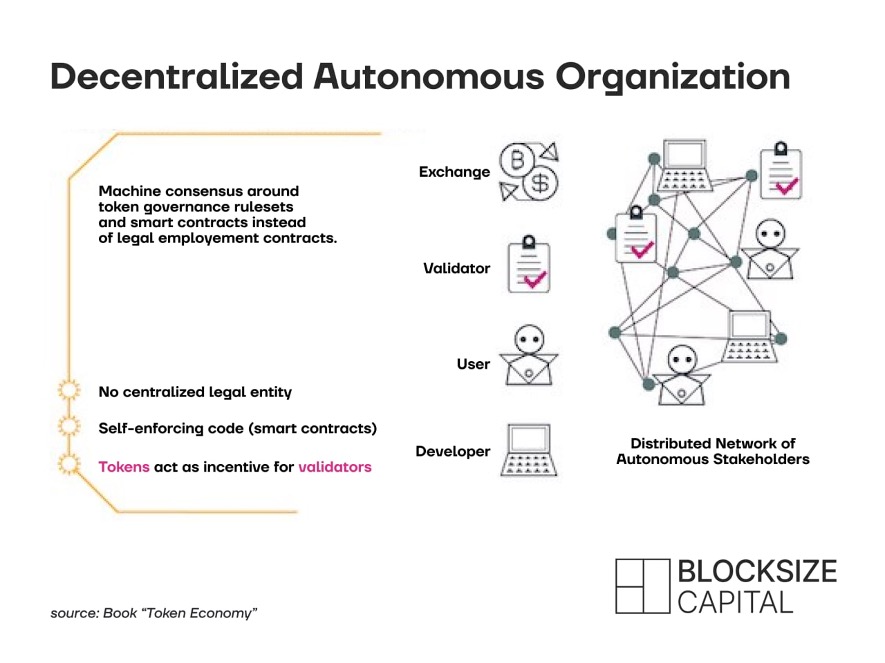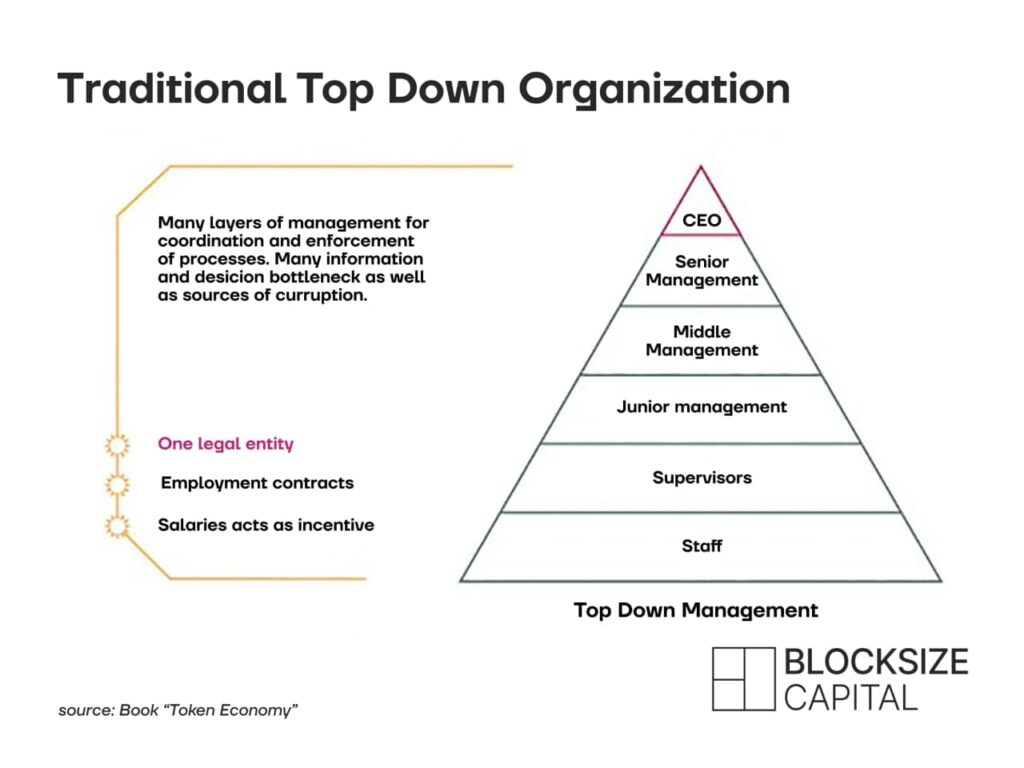From DeFi to DAO

by Marketing Team
Why Decentralized Autonomous Organizations are Essential to DeFi / What Decentralized Autonomous Organizations Mean for the progress of DeFi
In one of our latest articles we took a closer look at the concept of DeFi and how the developments in access and application of DeFi projects are going to fuel the motor of blockchain technology. Essential to the theoretical concept of DeFi is a decentralized realization of such projects. This is where DAOs (decentralized autonomous organizations) enter the scene.
Today we are going to portray why DAOs are becoming the primary medium for the governance and realization of many blockchain projects providing a practical implementation to the theoretical approach of decentralization and to what extent we can expect DAOs to literally decide about the future of DeFi.
What is a DAO?
To begin with, we can shed more light on the term and definition of a DAO. DAO stands for “decentralized autonomous organization” and refers to entities without central leadership, whereas a collective of members takes care of owning and managing the project and thus solving the so-called “principal-agent dilemma“ in regards to potential conflicts that may arise due to an agent having the power to make decisions on behalf of another person or entity in an organization (eg.: managers acting on behalf of shareholders, politicians deciding for citizens, etc.).
The function of a DAO is based on a self-enforcing open-source protocol with rules of consent attached to the native token, whereas individual behaviour can be incentivized as well as voting on a decentralized protocol or system being included. Most of the DAOs existing as of today hereby allow holders of a certain amount of tokens to participate in the governance and suggestions of changes to the underlying protocol. In a way, DAOs converge the theory of decentralization and blockchain technology taking into account that there are certain levels of decentralization and certain functionalities needed in order to ensure transparency and scalability in the operations of a blockchain organization.
Contrary to traditional organizations solely the self-executing smart contract or protocol of a DAO is needed in order to regulate the behaviour of participants of the network.

DAOs advantages towards traditional organizations/ company structures
On top of providing transparency in the absence of trustworthy personal contact, the structure of a DAO bears various advantages towards traditionally “top-down”-structured organizations and companies as we know them. In general there are neither different layers of management, nor bureaucratic or administrative coordination that needs to be fulfilled.
In theory DAOs are incorruptible as every single transaction and decision is stored on the blockchain. There is also no hierarchical structure in a DAO besides the code/ smart contract which once implemented also results in complete independence from and exclusion of censorship or control by a single entity. On the other hand we have to mention that this structure at hand enables projects to be completely open-source while at the same time serving as an operating system for people and institutions regardless of their origin, spoken languages, personal relation, or regional jurisdiction.
Especially with regard to jurisdiction, whereas traditional companies are depending on legal contracts, a legal system and the underlying governing law, the structure of a DAO seems to be a lot more suitable for DeFi projects, the blockchain sphere as a whole and maybe also the future of companies’ structures that exist detached from touchpoints with the fintech- and cryptocurrency world.

DAOs in practice
With the concept of DeFi gaining a lot more traction, more and more DAO structures found their way into the rapidly growing industry of blockchain technology. As we also mentioned in our latest article “DeFi boomtime!”, the application and level of decentralization in blockchain concepts varies depending on various aspects.
Bitcoin, for instance, technically can be described as a DAO as the miners and node operators decide on the organization’s future based on community agreements proving that there is no central governing entity needed in order to ensure the growth of the network. Some other well-known DAOs include projects like Uniswap, MakerDAO or Dash. All of these projects include governance mechanisms based on stakeholders voting on decisions in the absence of a central governing entity.
Resulting from the open-source composition of smart contracts, there are now so-called DAO frameworks (Aragon, DAOstack, etc.) emerging which can provide easy access to the structures needed in order manage projects in a decentralized DAO-manner, equally resulting in a more rapid progress.
While DAOs seem to be just as transparent as it can get, there are also some risks remaining in the choice of DAO as an organizational structure. As the concept of DAOs still can be seen as freshly emerged, a lot of regulatory and legal challenges are going to remain to be bridged before the process in terms of range of application and access can evolve. Similar to the concept of DeFi, legality, security and structure are the key topics that will be talked about very frequently when it comes to the implementation of DAO structures.
Outline
With the rapid progress of cryptocurrencies and various DAO structures emerging with the typical blockchain-esque open-source approach, as a result there will also be a higher range of application for DAO structures and more stability of the underlying technology.
Subject due to regulatory bodies and compliance, DAOs seem to have the capability of transforming the way companies and organizations are structured. What currently still seems to be an experimental stage, especially considering aspects like international jurisdiction, the scale of technology a DAO is based on, can quickly transform into a realistic perspective on the future of businesses as we know them.
In the initial stages of a DAO, there is often some level of technological centralization needed in order to ensure efficient decision making. On the other hand the concept of governance structures hereby has the potential to provide complete fairness and transparency, wherever and however it is going to be implemented, posing as a potential futuristic form of businesses and their environments. Bottom-up fundraises, NFTs as part of metaverses and DAOs in general are definitely here to stay.
If you are interested in being among the early adopters regarding the adoption of blockchain technology in trading and new trends in this ever evolving fintech-world, we are very much looking forward to assisting you with the most suitable trading technology surface and consulting service, here at Blocksize Capital.
Sources:
What Are DAOs And Why You Should Pay Attention
What is DAO – Decentralized Autonomous Organizations
What is a decentralized autonomous organization, and how does a DAO work?
Bitcoin is great, but real crypto innovation has moved elsewhere
This Is How DAOs Are Taking A Greater Role in the DeFi and NFT Sectors